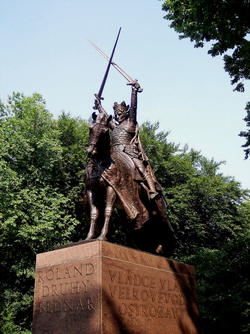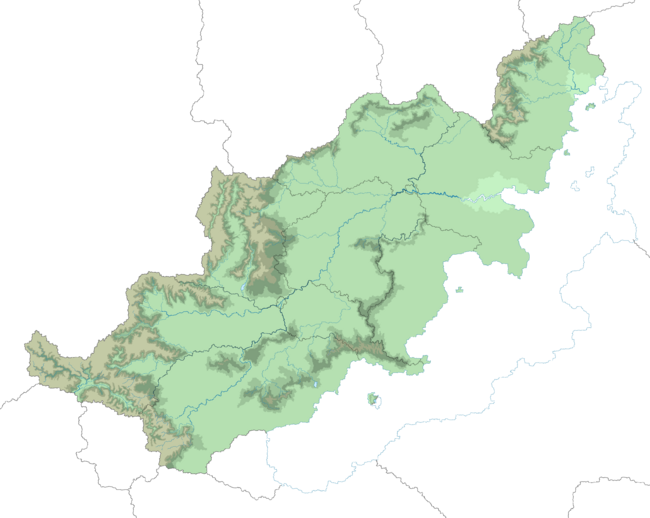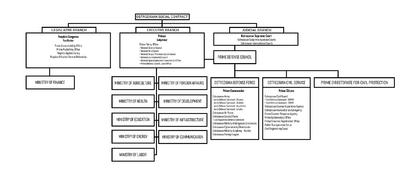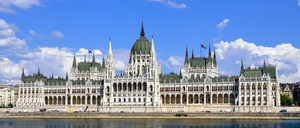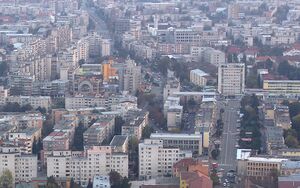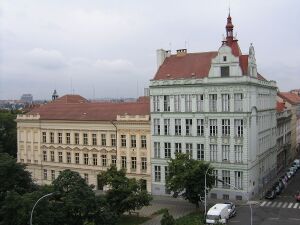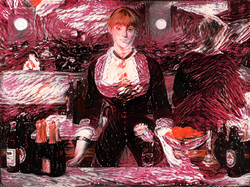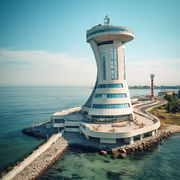Ostrozava
This article is incomplete because it is pending further input from participants, or it is a work-in-progress by one author. Please comment on this article's talk page to share your input, comments and questions. Note: To contribute to this article, you may need to seek help from the author(s) of this page. |
Prime Republic of Ostrozava | |
|---|---|
| Motto: "Ego fīām, Ego fīdam, Ego inteream." "I will become, I will believe, I will decay." | |
| Anthem: "Probuď své bolavé srdce, Ostrozavane!" "Awaken your aching heart, Ostrozavan!" | |
| National ideology: Beranism | |
 Ostrozava's Location in Belisaria | |
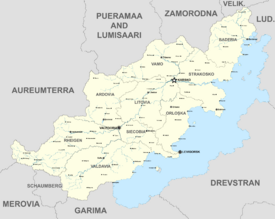 Political Map of Ostrozava | |
| Capital | Karsko |
| Largest city | Valegoria |
| Official languages | Common Ostrozavan |
| Recognised regional languages | Ardovian, Diodelian, Valdavian, Baderian, Magnish, Põjhamaan |
| Ethnic groups (2020) | |
| Religion |
|
| Demonym(s) | Ostrozavan |
| Government | Federal Beranist two-party premier-presidential constitutional republic |
• Primar | Benedict Král |
• Facilitatorá | Nela Repkov |
• Supreme Justice | Alan Michálek |
| Legislature | People's Congress |
| Area | |
• Total | 256,160 km2 (98,900 sq mi) |
| Population | |
• Estimate | 77,204,940 |
• Census | 2009 |
| GDP (nominal) | 2018 estimate |
• Total | 1,076,896,988,300 |
• Per capita | 13,948.55 |
| Gini (2018) | 36.9 medium |
| HDI (2018) | 0.729 high |
| Currency | Lev (ꬸ) (OZꬸ) |
| Time zone | Belisarian Central Time (+1) |
| Date format | DD/MM/YYYY |
| Driving side | right |
| Calling code | +450 |
| Internet TLD | .oz |
| |
Ostrozava, officially the Prime Republic of Ostrozava (Ostrozavan: Primarnă Republika Ostrozavskă), is a country in central Belisaria. It is bordered to its north by Velikoslavia, Zamorodna, Peuramaa and Lumisaari, and Ludvosiya, to the west by Veldia, to the southwest by Schaumberg, to the east by Drevstran through the island of Deryzide, and to the south by Garima and Otomarca. It also shares maritime borders with Ludvosiya, Drevstran, and Garima. The Prime Republic has a landlocked and hilly landscape that covers an area of 256,160 square kilometers (98,904 sq mi). Consisting of the majority of the region of Transkarminia, Ostrozava hosts a temperate climate flanked by the Ardullian and Tyvarian mountain ranges arising on its borders with Garima and Veldia respectively. A large part of the nation borders Lake Kupalnitsa, giving it several hundred kilometers of beaches. With over 77 million inhabitants, it is the world's eleventh-most populous country and Belisaria's fourth-most populous country. Ostrozava is a highly urbanized country including six population centers with over a million inhabitants. Its capital is Karsko, with 2.1 million residents, while its largest city is Valegoria with 5.5 million residents.
Transkarminia was first inhabited by the proto-Goths, a Proto-Magnic people, who established the polity of Tervingia during antiquity. A series of migrations of Ludic, Latinic, and Magnic peoples significantly changed Tervingian political structure and introduced Alban Nazarism, eventually leading to Tervingia's collapse in 429 CE. The High Voivodarate of Ostrozava formed in 1142, and the Alban-majority state engaged in several expansionist wars, adding Valdavia, Schaumberg, and parts of Baderia to its territory. After the arrival of Fabrianism, Orthodoxy, and Doceticism, the region became marred by intermittent religious wars for several centuries, culminating in the Declension, a period of political turmoil beginning in the mid-16th century which led to political fragmentation and occupation of much of the region by Velikoslavia. During the Thirty Years War, the resurgent Empire of Transkarminia regained northern Ostrozava and became a major power in Belisaria. The Crimson Revolution of 1909 overthrew the Empire and established the Prime Republic, which became increasingly authoritarian following territorial losses in the Containment War. Between 1954 and 1963, Ostrozava participated in the Great Republican War and regained lost territory, whilst also undergoing redemocratization. In the latter half of the 20th century, Ostrozava emerged as a middle power in Belisaria, tempered by a temporary era of neutrality between 1989 and 2020. In 2020, Ostrozava exited neutrality under the leadership of Benedict Král, adopting pro-Republican, moralistic foreign policy stance.
Culturally, Ostrozava is considered part of both central and eastern Belisaria, situated within the confluence of the Ardullian and Tyvarian Ranges. The primary ethnic groups are the Ostrozavans, a pluricentric West Ludic people closely related to the Ludz of Drevstran, as well as the Latinic Valdavians, Magnish Rheigners, and enclaves of Lushyods, Ludvosiyans, and others. Many Veldians have also lived in Ostrozava since the end of the Great Republican War, although numbers have dropped since the partial reopening of border crossings in 1989. In recent decades, Ostrozava has also cultivated an international diaspora centered on Dzhuvenestan, Tsurushima, and Talahara. The official language of the country on the Prime level is Common Ostrozavan, a standardized variety of the Karsko dialect of Ostro-Ludzic, with influence from Magnish and Valdavian contributing to the Ostro-Ludzic dialect continuum. Magnish is a recognized regional language in the S.R. Ardovia and S.W.R. Rheigen, and Valdavian is a recognized regional language in S.R. Valdavia, S. C. Siecobia, S. R. Ardovia, and in the city of Valegoria.
Ostrozava is a developed country with a diversified high income mixed economy. Ostrozava has been considered difficult to classify politically, variously evolving from liberal democracy to authoritian socialism to a hybrid system through its history. It is a federal republic and a representative democracy anchored in a nominally left-wing philosophy known as Beranism and the philosophical trends it started; the current political paradigm is known as the Third Compact. Although it does not consider itself a socialist state officially, Wernerist economic and political philosophy remain engrained within parts of its political culture. Economically, Ostrozava is a welfare state with a Tsurushimese bureaucratic model, universal health care, and tuition-free university education. It ranks as the tenth safest and most peaceful country, though it performs lukewarmly in democratic governance due to ongoing political turmoil. Ostrozava is a member of the Angrast Accord, Kiso Pact and Forum of Nations, and is the headquarters of the ITU through the latter.
Names
The name Ostrozava first appeared in the aftermath of Tervingian collapse as a synonym for the Transkarminian region in scholarly chronicles from the 8th century CE, rendered in the Gothic alphabet as 𐍉𐍃𐍄𐍂𐍉𐌶𐌰𐌿𐌰. The etymology of the name is disputed and has given rise to several theories. The leading consensus is that Ostrozava is likely a Proto-Magnic exonym derived from austraz-, meaning "east", and -sawa, meaning "sea" or "lake", and referring to the region's proximity to Lake Kupalnitsa, which Proto-Magnic peoples would likely have been approaching largely from the east and northeast. A more controversial Ludic etymology postulates a link with the Proto-Ludic root ostro-, meaning "sharp", and rězati, "to cut", ultimately from Proto-Kardo-Belisarian *wréh₁ǵyeti which could refer to the sheer cliffs of northern Lake Kupalnitsa or the Karmin River's "cutting" of the countryside. An alternative explanation is through the word grozav, Valdavian for "awe-inspiring" or "awesome" and also ultimately from Proto-Ludic groza, or "horror", which may refer to the scenic mountain views migratory peoples would have encountered when traversing deeper into the region.
The name Transkarminia is of Medieval Latin origin and first appeared in Fabrian texts written in the Holy Audonian Empire in the early Middle Ages, and derives from the name of the Karmin River. The Common Ostrozavan word Karmin derives from a pigment, carmine, or crimson, ultimately from Proto-Farsian kŕ̥miš through Latin carminium. Transkarminia thus translates to "on the other side of the Karmin". Given that both sides of the Karmin river constituted the Ostrozavan polities at the time, it is possible this term developed in reference to the religious makeup of the land, as Fabrian practitioners tended to reside on the western bank of the river; this explanation, however, is complicated by the fact that the term Ciskarminia does not appear in similarly-dated texts. Today, the term Transkarminia is a geographical term, referring to the area of the drainage basin of the Karmin and Balarog rivers, or to the historical empire, although it still sees occasional use as an informal descriptor of the country or the peoples within it.
History
Early history
Humans have inhabited the Transkarminian basin for millennia. Ostrozava's prehistory is predominantly marked by a variety of small Germanic polities in the basin, which eventually coalesced around the Western Gothic City-Kingdom of Saragetra (modern Valegoria), which in turn became the nexus of the colossal Tervingian High Kingdom and the site of its proclamation in approximately 323 BCE. The Tervingians often warred with the Gaets, as well as the Kingdom of Hétumoger under Janos I, and the outermost reaches of the Latin Empire, which at one point reached modern Valdavia.
Starting in 428 CE, the second migration of eastern peoples arrived in an increasingly-bloated Tervingian system; this time, the Slavs had arrived, and began to alternatively integrate into, trade with, or raid the rapidly-fracturing empire. With the arrival of new peoples from all directions also came the arrival of several new religions, chief among them the Nazarist Albans, which often combined with, and superseded, local pagan religions through liberal use of syncretism. The Transkarminian basin was one such point of convergence for both Albanism and Ludic migratory tribes, along with the eastern coast of Lake Kupalnitsa, in modern-day Drevstran. The Kingdom of Karsko, formed around the self-named new settlement of Slavs north of the repeatedly-pillaged Saragetra, soon established itself as the predominant force in the basin, as both a military power using innovative tactics of the Ludic peoples, as well as a prolestryzing Alban religious power, which often gave smaller polities ultimatums between inclusion under conversion or eradication. Several new dialects emerged in the region, primarily the Proto-Ostroludzian dialect of the Kingdom of Karsko and the Proto-Valdavian language, formed from a combination of Latin, Ludic, and Germanic influences.
Politically, Valdavia, then a nascent kingdom coming out of the collapse of Tervingia, also converted to Albanism, and established itself as a dominant trading power in the south of the lake, trading with the newly arrived Lushyodorstag as well as Morinia. By 600 CE, the Transkarminian region had stabilized into the Kingdoms of Karsko and Valdavia, as well as several smaller city-states, duchies, and other polities, among them the important cosmopolitan harbor of Levigorsk and the Saxo-Gothic Duchy of Rheigen.
Medieval Period
Throughout the 9th century, the Kingdom of Karsko, under the Ludzic Bednář family, expanded into greater northern Transkarminia, invading and incorporating the Duchies of Vamo and Baderia. A complex political situation and religious pressure, however, had the final king of Karsko, Libor Bednář ousted by a conglomerate of chiefly Alban Tervingo-Ludic chieftains. The most powerful of these chieftains, Roland Válek, soon rose to power to become the first High Voivodar of Ostrozava, retitling himself as Roland I after formally creating the title of High Voivodar to consolidate his power over the formerly independent petty states of the North. He was succeded by his son Lyuda, in 992, and then by his grandson, Roland II, in 1049. Roland II died in 1176 of what tradition alleges was a stroke in a brothel. His third-born and oldest surviving son, Otmar the Builder (Ostrozavan: Otmar Ztăvitul) succeeded him.
Otmar the Builder, widely considered to be one of Ostrozava's most effective and even legendary rulers, died after a period of prolonged peace in 1237, having gained the respect of both the political establishment and the religious establishment, while establishing trade routes to eastern states in Morinia, Azdraï and the Lushyodorstag. Otmar had also presided through a period of rising tensions with the southern Kingdom of Valdavia, after claiming the Kingdom via historial precedent in the marriage of the Tervingian ruler Alica to the eldest daughter, Raluca, of the confederation of Valenian chieftains, a precursor of the Kingdom of Valdavia, in 327 BCE. The Duchies of Rheigen and Tungria, in the west, came under the influence of the Holy Aulic Empire.
The powerful Válek dynasty would go on to continue the Karskian legacy of territorial consolidation in Transkarminia in the Ostrozavan Wars of Expansion; from Zikmund Válek's 1242 expansion into Valdavia onward, Ostrozava would go on to take Polnitsa, Rheigen, Milcenia, and Tungria from the Holy Audonian Empire by 1309. A Fabrian uprising in southern Ostrozava halted further expansion into Imperial lands by 1311, leading the Váleks to set their sights on the greater Alban world in an attempt to unify the Kupalnitsa area against future Fabrian expansion. The Ostrozavan Invasion of the Lushyodorstag, despite initial victories, failed after the Ostrozavan defeat at the Second Battle of Barbellon, which also led to the death of the primary Válek heir, Prince Gabriel, in 1320.
Gabriel's death and the failed invasion had drastic internal consequences for Ostrozava. Kamil Válek, Count of Karschberg and third-in-line to the throne, challenged the new High Voivodar Viktor's claim, leading to the disastrous First Ostrozavan War of Succession, which lasted from 1329 to 1335, with a win for the dominant branch of the Válek family and a consolidation of power under Viktor I.
Eastern Renaissance
Ostrozava's central position in Belisaria made it a crossroads for the wider region, recieving trade from both east and west of Lake Kupalnitsa; religious tensions with the Fabrian world remained high, as did those with Veldia. In 1405, the Council of Pyrovegny was held in the Lushyodorstag, bringing a degree of denomenational unity between the Docetic and Alban Nazarist lauras in the face of encroaching Fabrian dominion over the continent. The Council's primary achievement was consensus on the contents of the first Oecumenical Bible, which would be valid for both Albans and Docetics. The advent of the Council opened up exchange and communion between communities of the two denominations; the Docetic Church's first missionaries arrived in Valdavia in 1407, garnering protest from remaining Fabrian nobles and general indifference or even tolerance from the Emendatic priesthood and political establishment.
Declension and Schaumberg War
XXXXXXXXX
XXXXXXXXX
XXXXXXXXX
XXXXXXXXX
Velikoslavian Suzerainity and Valdavia-Rheigen
Valdavo-Rheigner Expansion
In 1694, with the Triple Crown across the lake gaining considerable power, the Belododia family began to lose remained of its declining power to the Kostra and Vykopal dynasties; the Vykopals, under Dukes Tudor and Letisov, had been gaining power throughout the rule of the Belododia dynasty since the end of the Declension, while the powerful and old Kostra dynasty had long been vying for political influence within Valdavia-Rheigen since before the declension. Wary of another war of succession, Aurel III Belododia, in ailing health, formally designated Duke Vavrinec Vykopal of Levigorsk as his official successor in lieu of his obese son, Bohus Belododia, which came as an unprecedented shock in post-Declension political culture. As a result, Duke Baltozor Kostra raised his flag in rebellion against the Belododia dynasty, intending to install Bohus as a puppet; the Vykopal professional standing army smashed the Kostra's levy-based host, virtually handing over total power to the Vykopal dynasty.
Vykopal Era & Thirty Years War
Upon Aurel III's death in 1729, Vavrinec Vykopal formally became King of Valdavia-Rheigen, and, despite having been a devout Emendatic Christian himself, decreed that all denominations went against the will of the crown. Successively through the 1730s, Vavrinec first endorsed Lutheranism, and later the "Alban-Lutheran pact", a phenomenon which soon developed into the state-sponsored Karminian hybrid faith. While the new state church was ostensibly still Protestant, it nevertheless incorporated huge swathes of Docetic and Alban doctrine, including strict nontrinitarianism. The new faith was enforced strictly by Vavrinec, who forced en-masse conversions of the majority of the nation to the faith throughout the 1740s, attracting the ire of both the Alban and Fabrian worlds, including Pope Florentine.
After Vavrinec's death from gout in 1768, his oldest daughter, Aliana Vykopal, became the queen of Valdavia-Rheigen and Empress of Transkarminia; with the longest reign of any Vykopal, Aliana is noted for her exotic lifestyle, hot temper, and political marriage to Michael of the Latin Empire, the third son of Empress Maria III Tullia and her husband Michael of Ghant, which normalized relations with the West. Aliana is best remembered for leading Transkarminia through the Thirty Years War, fighting alongside the Kvor and Mesogeians against the collapsing Velikoslavia, successfully mending the declension with the reclamation of Ostrozava proper and Baderia by the wars end.
Later in life, Aliana would go on to establish a highly centralized and modern nation, especially for the region, ruling strictly while using Karminian doctrine as an organ of state control. At the end of the 18th century, Garima and Latium served as important allies for Ostrozava in lieu of its earlier alliances in the Kupalnitsa area. Vykopal-era Ostrozava is sometimes considered to have constituted the easternmost member of the Belisarian monarchical paradigm, with the dynasty attempting to integrate itself into western diplomatic circles. Empress Aliana's health began to fail in the 1820s but she nevertheless presided over several controversial accomplishments, including the levying of unpopular taxes to modernize the nations' industrial capacity. The first factories, specializing in textiles and early forays into canning, opened in 1821 and 1823, respectively, in the Valegoria area, which soon became a nexus of the Industrial Revolution.
Growing Unrest and Rifler's Strike
Feudal authority suffered a serious setback in 1824, when Aliana Vykopal, having enacted several unpopular tax policies, died to an assassin's bullet; the apprehended assassin, Marek Čiernik, had been radicalized into action by witnessing successful resistance to unrest in Talahara. Marek Čiernik was a prominent intellectual in the Lake Kupalnitsa area, having been credited with the first functional lightning rod in the nation in 1811; his arrest and subsequent execution greatly impacted the growing clade of Ostrozavan academics. Ostrozava's rapid modernization, which included an at-least cursory education for the majority of the nation, exposed many to the ideas of Werner and Alençon.
Though Čiernik's ploy to start a revolution failed, with Aliana's young son Aurel IV cracking down on what remained of personal freedoms in Ostrozava as a result, the assassination is widely regarded as the first impactful antimonarchical action in Ostrozava since Baudry Zyler. The assassination served as the crucible of what would become a century of oscillation between unrest and crackdown. Aurel IV died in 1855, leaving the nation to his son, the controversial and often-ineffective Peter II. Peter II greatly centralized noble rule, almost eliminating mobility within the clade, including the granting of titles, while centralizing almost all power away from former feudal lords and into the Emperor, a move that would prove unpopular even among the inner council. The monarchy continued to emphasize Karminian doctrine, attracting the long-term ire of Alban and Docetic movements and nations, including the Drevstranese Triple Crown.
In 1884, several important Ostrozavan armaments factories to a standstill in the famous Rifler's Strike, which crippled Peter II's military modernization program. The armaments workers defended the factory from police and early military incursion until the foreign-armed Royal Guard forcefully reopened them in early 1885 at The Rifler's Battle. The government's forceful response to growing anti-Vykopal sentiment, particularly the Rifler's Strike, drew naysayers out from even the rank-and-file military, leading to a decline of anti-populist decrees by Peter II for the remainder of his reign.
After Peter II's death in 1891, his son Borek I took power over an increasingly antimonarchical sentiment within the nation; as a young ruler at his ascension in 1891, he often found himself at odds with both older members of the nobility, which had grown increasingly dissatisfied with the strict rule and Karminianism of the Vykopals, as well as the growing Karsko University Drinking Club, which included prominent academics and philosophers such as the mystic philosopher Vlastimil Beran, anti-monarchist Julius Jahoda, pseudo-Wernerist critic Vladan Vítek, psychoanalyst Stan Bača, and feminist Loren Kraiova.
In 1901, having taken note of the rise of international revolutionary liberal and leftist movements throughout Belisaria and beyond in the past century, the Karsko University Drinking Club published the Crimson Manifest. The Manifest outlined the demands of the Drinking Club in response to the increasingly unpopular reign of the Vykopals, including the abolition of serfdom, Karminianism, a 70-hour work-week for factory workers, and more. Chiefly penned by burdgeoning socialist Vladan Vítek, the Manifest became a rallying cry for the peasantry and workers in the partially-industrialized nation, reinvigorating the popular movements initially catalyzed by the Rifler's Strike.
Utrătenia
Rioting and strikes of minor industries intensified over the next half-decade; in 1905 the Empire of Transkarminia formally abolished serfdom, being one of the last states in Belisaria to commit to the policy. The abolition of serfdom sent hundreds of former serfs flooding into the cities, creating a homelessness crisis amid the winter of 1905-06, which saw over 2,500 dead of hypothermia. The Black Winter of 1906, named for the frostbitten former serfs' blackened features, would see blame laid at the feet of the Vykopal dynasty.
Crimson Revolution & First Compact
In response to the increasingly bleak situation brought about by the Emperor's mishandling of the Black Winter and abolition of serfdom, prominent intellectuals in Ostrozava, including the Drinking Club and other anti-establishment thinkers, coalesced at the 1st Ostrozavan Worker's Convention of 1907. The Convention did not initially advocate for armed revolution, but instead took the route of compromise in aiming for a constitutional monarchy with greatly increased worker's rights. Internally, the convention had seen a rift develop between the Worker's Party and League for Democratic Reform, primarily over theoretical and ideological differences as to the role of the market. In mid-1908, after the Convention published several proclamations doubling down on the Drinking Club's original Manifest, Borek Vykopal made a public speech denouncing the Convention as enemies of the state. Borek's proclamation soon ended internal squabbles in the Convention, particularly between heads of the LDR, Julius Jahoda, and Worker's Party, the young Emil Torje, as the situation's urgency required unification. Before the end of the year, internal compromise had been reached, and the monolithic United Republican Party had been created, in an effort to directly oppose the Vykopals.
On 21 March 1909, the Worker's Convention submitted their demands to the Emperor, including the first draft of the Ostrozavan Social Contract as written by Vladan Vítek, long considered the head of the Convention's faction for compromise and most skilled author. Emperor Borek denied the Worker's Convention's demands, and, gambling for the military's loyalty, ordered the arrest and execution of the Worker's Convention leadership. The orders shook the Ostrozavan military, which had already faltered in its tantamount support of the Vykopal dynasty after the Rifler's Strike. In response, the military denied the Emperor's order as "immoral and un-Dukelike", but did not offer support to the Convention, either. The summer of 1909 brought mass rioting and civil unrest throughout Transkarminia; several noble families, particularly those of Valdavia and Rheigen, began to flee into neighboring Garima and Vannois, escalating the situation and the military's to-be role in it. In October 1909, after the Emperor ordered the execution of military leadership for treason, the military formally declared its tentative allegience to the Worker's Convention, and on 14 November 1909, Emperor Borek was formally deposed and executed in a trial by combat by crowds in Karsko in support of the First Convention; the rest of the Vykopal family disappeared and were presumed dead trying to cross the border into Veldia. The remaining Ostrozavan noble families fled to Drevstran, or else renounced their noble status by early 1910. The events of 1909 as a whole are now considered to constitute Crimson Revolution.
On 1 July 1910, the first draft of the Ostrozavan Social Contract was ratified and the Prime Republic of Ostrozava formally created, with Julius Jahoda being elected as the first Primar as part of a united coalition. By 1912, the compromise between the Convention's factions had faltered, and the Socialist Worker's Party split from the United Republican Party, with the latter holding on to urban and educated support while the latter surged in the countryside with former serfs and peasants, as well as some workers. Within a year, other political complications plagued the young republic, including diplomatic hostility from the Gariman crown, as Queen Albina of Garima was the last surviving Vykopal, the developing Drevstranese Civil War, and the rise of the ultranationalist pan-Alban Rytieriroz. The Rytieri had begun by the end of 1911 to be a particularly influential force, especially among isolated Alban communities still unscathed from the Karmininian Era; the Republican Government responded with harsh measures but refrained from directly confronting the agitators; Primar Jahoda began to see increasing pressure from the growing left in dealing with the nationalists, but Jahoda committed to nonviolence publicly in early 1912, in an effort to curry favor himself with isolated religious communities and appear a moderate to the international community.
Rytieriroz and Growing Regional Tensions
In 1913, the internationalist flank of the left began to draw increasing attention to similar emancipatory movements worldwide. The Drevstranese Civil War remained a particularly topical question, with many within the People's Congress advocating for some form of intervention on the side of the Farkas Band. With Jahoda indicating he would not run again, ardent leftist Founder Vladan Vítek was elected Primar in a contested election with several disunited leftist parties. Though himself a socialist, Vítek often emphasized the importance of compromise, drawing on his experience orchestrating the Revolutionary Compromise, and in the Drinking Club; as such, Vítek ran what is considered to be a centrist administration. Despite the fact that he was considered to be the most moderate of all the candidates, Vítek's election and subsequent tepid support for the Farkas Band still galvanized international pressure on the nascent revolutionary state, often funneled into the Rytieri as an easy avenue of sowing discord. Lack of formal or strenuous government response to the Rytieri had reactionarily galvanized the Socialist Worker's Party; by 1919, the Socialists led the nation in most registered members, eclipsing the United Republican Party. The Socialists, still led by Emil Torje, saw the Alban Rytieri as a national threat and advocated for the "systemic dis-emphasis of religion" as a result; the Socialist position drew popular support from many who had been disappointed or raised under Karminianism, but also sent devout Fabrians and Albans flocking to the United Republican platform, thus further pushing the Socialists towards the left.
After several Rytieri marches in 1920, a concentrated labor movement began under the SWR's umbrella, seeking even better working conditions, including a two-day weekend, as well as a government crackdown on the Rytieri. Throughout 1921, despite interference from the Ostrozavan Prime Army, several skirmishes unfolded between the Rytieri and Socialist Worker's Party in especially Alban areas of Ostrozava; this time period of 1920-22 came to be known as the Bat Summers from the militia's choice of weapon.
All of Ostrozava's immediate western neighbors began to posture aggressively in late 1916, namely Garima, then led by Wilhelm IV, Veldia, and Velikoslavia.
Containment War & Socialist Consolidation
In 1922, the People's Congress and Primar Vítek called a Second Worker's Convention in an effort to resolve increasingly stark political divisions over the situation on the ground; the result was the enshrining of Wernerist thought, strong union and labor protections, and the concept of permanent revolution directly into the Ostrozavan Social Contract. Following the official adoption of the new provisions, Vítek announced his intention to step down in 1923, leading to a snap election from which Emil Torje of the Socialist Worker's Party emerged victorious with 52% of the vote.
Torje's rule would mark the beginning of the Second Party Compact, in which the Socialist Worker's Party would hold constant majority. Major economic reforms from 1924 onward resulted in the implementation of a hardline internationalist communism; throughout the nation, many major industries, including that of food production, were fully nationalized and placed under a quota system and command economy. Rytieri-adjacent members of society were marked as dissidents and jailed or executed. Internationally, the Prime Republic began looking for allies; between 1925 and 1930, the Prime Republic signed treaties with socialist Wahzeganon and _____ and showed open soldiarity for the burdgeoning North Ottonian socialist movement during the Ottonian Civil War. In Transkarminia, relations with Garima and Veldia became especially cold, while, due to pragmatic politics, relations with the Orbraggarist Drevstran remained cool but cordial.
Second Compact
Primar Torje died suddenly in an auto accident in Levigorsk on 27 March 1930 in a move that is retroactively believed to have been orchestrated by his immediate successor, first PRCO director and Subprimar Alek Dalibor, who would go on to blame Torje's death on Invictist activity from Velikoslavia, which he accused of funding the Rytieriroz in the previous decade. This act consolidated Dalibor's domestic power behind an atmosphere of fear far more intense than that of Torje's administration, but also caused diplomatic troubles. In 1934, Dalibor purged his leading rivals in the Socialist Party and pressed forward with the move to forcefully secularize the nation, outlawing the practice or worship of all but "what is known to be true", an intentionally vague phrase that allowed local law enforcement the ability to exonerate, or execute, any percieved transgression under the crime of religious thinking. The phrase, formally "...and enforce adherence to all that is known to be true", began to be known as Dalibor's Law. By 1937, over 15,000 religious monuments had been destroyed, over seven million violators of Dalibor's Law had been imprisoned, and over 600,000-1.2 million were executed or disappeared.
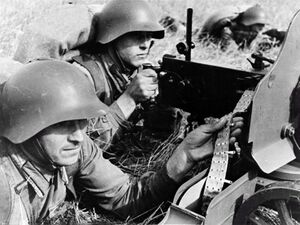
The policy proved controversial, with both the dwindling oppositon and the threat of infighting posing a threat to the further expansion of the policy. Internationally, Dalibor would commit Ostrozavan troops to the Great Ottonian War in 1937, formally embroliling the Prime Republic in its first ever international conflict, and leading to border clashes with Garima, Schaumberg, and Veldia, and calls for both radical escalation and peace from within Ostrozava. Realizing the importance of the political status-quo's survival to his own, Dalibor eased religious oppression and pivoted the state's efforts in 1938, focusing more on eradicating the Karminian religious adherents left after the fall of the Vykopals by painting them as Royalists, a young and rural demographic that had largely dwindled since the revolution. Government law enforcement and the newly-founded PRCO also began direct political opposition of radical cultural movements. Brothels, speakeasies, pubs, and college campuses were often raided and charged with crimes of either religious or antirevolutionary nature. Dalibor had a particular hatred for Jazz, which had begun developing in Ostrozavan underground music circles a decade earlier, as a symptom of border connections and a developing grey and black market for recordings, often smuggled through Drevstran and Merovia. Dalibor went on to outlaw jazz music in 1941, the Jazz Ban, which resulted in sporadic protests and political violence for the next two years. During this time, Dalibor reportedly developed an addiction to amphetamine and lithium, spurring further controversial decisionmaking.
Further help would be given to various revolutionary movements worldwide via the creation of the Ostrozavan Foreign Legion in 1946. OFL or PRCO elements operated in areas such as Schaumberg, Usezoya, Zamorodna, and elsewhere, though official confirmation of these activities would not be publicly disclosed until after the PRCO's dissolution in 2020. Ostrozavan forces would continue to fight in conflicts worldwide in support of socialist movements until the end of the Great Ottonian War in 1943 caused a domestic economic crisis that coincided with the Typhoid epidemic of 1944. After the end of the Great Ottonian War and subsequent epidemic, Ostrozavan authorities pivoted the nation's economic policy, further clamping down on small businesses and sellers in rural regions and establishing a fully-fledged command economy with a focus on developing pharmaceuticals and weaponry; the state reaffirmed its mission to spread socialist revolution abroad in 1945 with Dalibor's secret speech to the People's Congress.
In the late 1940s and early 1950s, the PRCO had become increasingly bold in its attempt at social machination domestically under orders from Dalibor to cull social dissidence resulting from his Jazz ban and tight grip on society, fruitlessly attempting to develop various forms of mind control programs, including experimentation with hypnosis and the recently-discovered psychoactive drug Metalysergine. While initial experiments were conducted on dissidents in secrecy through the abuse of the psychiatric system, in psychiatric prisons referred to as Psicușcas (lit. "Psychic Cages"), in 1950 Dalibor ordered the PRCO to expand the program in order to see its effects on a large population group. This led to the 1950 Redstream experiment, in which a group of 100 villages in the Ilhava valley south of Skarca in the Subprime of Ardovia, near the border with Veldia, would have their aquifers laced with MLN as part of a long-form social experiment. The Redstream experiment was overseen by elements of the PRCO, military, and scientists from the University of Valegoria. The results of the experiment were inconclusive, resulting in a variety of outcomes unfavorable to the regime, including anarchy, religious awakenings, and the creation of cults, with only two villages outside of the control group seeing an increased adherence to Dalibor's policy objectives. Disillusioned, Dalibor cancelled the program in 1951 and shifted focus to more traditonal forms of social control, although the damage had been done. Scientists from the University of Valegoria reintroduced their synthetic MLN as well as several other former mind-control substances to their faculty, which were later disseminated into the general populace, bolstering an already-growing sexual revolution and counterculture as part of what would become the Open Fifties in Ostrozava. After the end of the Redstream experiments, the contaminated aquifers, being close to the border of Veldian]-occupied Rheigen, generated unrest in the Rheigner-majority areas, as the hallucinatory visions induced by the aquifer spurred an active nightlife and new threads of philosophy; this growth of anti-authoritarian empowerment began to be known as the Budenitsa (Ostro-Ludzic: "The Waking"), and greatly increased social unrest in areas of occupied Ostrozava, with effects beginning to bleed across the border soon after.
Great Republican War
Eager to save face with the populace and and stoke a sense of nationalism to rebuke the more liberal elements of the Socialist Party, Dalibor indicated his objective to retake Rheigen from the Veldia in late 1951, which had been one of the regions hardest hit by the social movements of the Budenitsa. In 1952, several regions of the Veldia entered open rebellion against what was seen as ethnic and religious oppression by the central state, including South Hauland, Transgvalenia, and occupied Rheigen. Ostrozava immediately began supporting these movements with weapons and other material aid typically delivered by airdrop, while two large army groups reconstituted south with the intention of posturing towards an invasion of Rheigen. Dalibor had been searching for an avenue towards direct military involvement without it being viewed as a provocation to monarchist powers in the region, particularly Velikoslavia, and, in a series of secret meetings in mid-1952 with Schaumbergish leaders, Dalibor recieved assurances that leftist militias trained at the Veldo-Schaumberg border would be joining in on a prospective invasion plan; secret messages were subsequently sent with the intention of partially integrating the military intelligence and objectives of the Crimson Army with these partisans as unrest continued to grow in Rheigen.
After some deliberation domestically, and amid growing disillusionment with his regime, Dalibor ordered a full-scale military invasion of Rheigen in early 1953, with Ostrozava's most advanced tanks and jet aircraft striking several Veldian military positions in Rheigen in the opening hours, while special forces crossed the mountains into Veldia with the intent of fostering further anti-assimilationist seperatist sentiment and harrassing government supply lines. Subsequently, Ostrozavan forces initiated an air assault and subsequent ground invasion in the southern part of Rheigen, linking up with both Rheigner and Schaumbergish paramilitaries and immediately taking Wittenburg, thus severing the Veldian connection to south Belisarian river trade networks.
Chaos of '57 and Overthrow of Dalibor
Though the outbreak of hostilities had initially been described by the Dalibor administration in uncertain terms, as a "necessary military intervention" or "logistical support of a popular uprising", but a renewed Veldian resolve following the Siege of Wittenburg and bombing raids launched on the core of Ostrozava caused an imposition of martial law in 1956, in addition to existing measures restricting "unsocialistic" behavior. Chief among them was a shift towards "total war outlook" (Common Ostrozavan: Totálnii razbovii výhlîad). The government began rationing strategic resources intended to the front, including steel and copper, and mobilized 500,000 men in late 1956, bolstering a Ostrozavan Army which had swelled to more than 1 million active members in the wake of the war. For the first time however, the mobilization of 1956 was non-exclusionary, targeting urban and rural areas alike, and resulting in many educated university students of anti-war persuasion being issued draft notices. Martial law also entailed the banning of public gatherings, and, in a particularly controversial move, the banning of all syncopated music, a provision historiographically assumed to have come from Dalibor's whims as an expansion of the Jazz Ban, and not from official codes for procedure during martial law.
With Rheigen liberated and the Veldians pushed back to the Tyvarian mountain passes, war support waned domestically within the Prime Republic, as the liberation of Rheigen had restored the country to its revolutionary borders, and no great enthusiasm existed to prolong the 'total war outlook'. Several protest groups, largely composed of students and young people, many among them deserting soldiers, convened across Ostrozava in the winter of 1957 with the goal of staging a massive anti-war, anti-Dalibor protest. These included the Anti-Totalist League, Transkarminian Guitarist Club, and others. However, the activist leaders were unable to decide on whether the protest should be silent, highlighting the impact of the music ban, or "loud", defying it through musical performance. In the end, both protests were held.
The silent protest had been organized to take place on 14 August in the Karsko Grove, in front of the residence of the Primar. The reportedly furious Dalibor directed his recently replaced military attache to organize a response, which turned into a disaster. Dalibor could only sit and watch for hours as the protest continued and the response organized. Simultaneously, the Valegoria concert, Gargantua, had begun in a field in Valdavia not far from Subprimar Grigore Borza of Valdavia's private mansion in Poiana Tântrați, 50 km from Valegoria.
Borza responded to the concert four acts in, when an already-organized force consisting of elements of the 71st Airborne Division arrived in a forceful response which soon began to erupt in violence. IIncrepo e Turpe (Latin: "Rebuke from Infamy"), a popular scut band, found themselves surrounded armed soldiers attempting to arrest them during the third song of the set. A soldier onstage was hit in the head with a brick by a concertgoer, killing him from an impact to his head while firing his rifle involuntarily. The commander at the scene, Major Jonas Zaiser, immediately attempted to call for a cease fire, but the damage had been done as several other soldiers began shooting, and chaos began erupting throughout the concert. The death toll for the Gargantua Disaster included 86 soldiers mobbed to death by the huge crowd, while about 700 were killed before the order to stop shooting had been properly enforced. The military immediately put kill orders on the soldiers responsible for coordinating fire after the first shots rang out, their NCO, as well as for anybody who killed a soldier in the crowd, including the brick thrower, who was the first shot. Most recordings of the event were seized, including all visual recordings, but live radio stations had continued to transmit the signal across the border, recording clear gunfire for about three seconds before the feed cut out. Physical copies of the recording found their way back into the Republic through Drevstran only a day later, greatly increasing agitation with the government and causing riots major cities, with the largest riot in Valegoria leading to over 200 deaths by the end of the week. On the battlefield, some soldiers mutinied, and others began to frag their political officers.
Third Compact
The end of the war had devastated much of Ostrozava's border regions, including the newly-reintegrated Rheigen, although the southern regions of Valdavia and Siecobia were spared the majority of the destruction; nevertheless, that which was destroyed had largely been impacted by hostile strategic bombing. The political situation had improved greatly since 1957; the Third Compact mandated that the government would transfer from the Prime Defense Council back to civilian control following an election in 1965, which was to be the first of many in a five year cycle. Under Beranek, economic growth was haphazard but generally trended upwards, spurred by the forced privatization or partial privatization of many enterprises that had previously been cornerstones of the Daliborist planned economy, such as Delia Automotive, or else defense workshops which had been created during the war, such as KAD. Such a turnaround from economic devastation had also been enabled the newly-established Civil Service's Civil Engineering Corps, which helped reinforce wartime logistical links to Drevstran and Ludvosiya and reconstruct railways and highways throughout the region.
While the opening of economic links to Ludvosiya and Drevstran, and thus to the global seaborne trade network, had helped bolster the economy by moving it away from the pseudo-autarky of the Second Compact, the increasing militarization of borders with Veldia and Velikoslavia, and accompanying reinforcement and building of a competitive military, occupied much of the Beranek administration's temporal and financial resources. Socially, the Beranek years previsaged what was to follow in the remainder of the decade, with vast social liberalization and improvements to human rights following in many areas, particularly in press freedom.
New Society and Progressive Era

XXXXXXXXX
XXXXXXXXX
Nostalgic Era & Socialist Resurgence
XXXXXXXXX
XXXXXXXXX
Northern Crisis, Growing Instability, and Neutrality
Modern History
XXXXXXXXX
XXXXXXXXX
XXXXXXXXX
XXXXXXXXX
Geography
The Ostrozavan landscape is varied. The south and southwest is host to the Ardullian mountains, a mountain range on the border with Garima; the adjacent Tyvarian mountains constitute the majority of the border with Veldia and are considerably higher through their tectonic formation through the pressures of the Karminian and Belisarian plates. Ostrozava's highest peak is Oglav, at 3,574 m (11,725 ft). Siecobia and northern Valdavia are also quite hilly, home to the Delian mountains, while Baderia, in the north, is flanked to the west by the compact Bardia Mountains. Ostrozava has two main waterways, both flowing eastward into Lake Kupalnitsa. The first and largest river is the Karmin river, which flows through Karsko. The nation's second largest waterway, the southeastern-flowing Balarog River, merges into the Karmin at the Great Fork, currently the focal point of the city of Valegoria.
Phytogeographically, the vast majority of Ostrozava is located inside the region of Transkarminia, traditionally defined as the eastern side of the Ardullo-Tyvarian range, as part of the Karminian tectonic plate. According to the IBEST Conservational Fund, the territory of the Prime Republic can be subdivided into four ecoregions: the Central Belisarian broadleaf forests, Karminian grove forests, Tervingian mixed forests, and Ardullian montane conifer forests.
Ostrozava has one of the largest areas of undisturbed forest in Belisaria, covering almost 30% of the territory; recent lumber drives have significantly cut back this number. Some 4,200 plant species have been identified in the country, from which to date 15 have been declared natural monuments, 26 missing, 123 endangered, 340 vulnerable, and 2,150 rare.
Temperate forest in southern Vamo.
Government and politics
The Prime Republic is a unique form of federation, officially describing itself as a "Republican Federation of Equality". It is a representative democracy, "in which majority rule is tempered by minority rights protected by law". The government is regulated by a system of checks and balances defined by the Ostrozavan Social Contract, which serves as the country's supreme legal document and constitution. For 2018, the P.R.O. ranked 39th on the Democracy Index and 12th on the Corruption Index. In the Ostrozavan socialist-federalist system, citizens are all unilaterally subject to three levels of government: Prime, Subprime, and Local. The local government's duties are typically split between city governments and county governments, with the former holding jurisdiction over urban areas while the latter hold jurisdiction over rural and suburban areas. In almost all cases, executive and legislative officials are elected by a plurality vote of citizens by district; representation at all levels is typically first-past-the-post in nature, though some areas have local variation or proportional representation.
The Prime government comprises three branches:
Legislative: The unicameral People's Congress, headed by the Facilitator, makes federal law, declares war, approves treaties, has the power of the purse, and has the power of impeachment, by which it can remove sitting members of the government. It also has the ability to amend and change the Social Contract. The Primar selects the Facilitator, but only the People's Congress may approve the selection. The Minister of Finance is selected by the Facilitator; if the dominant party in the People's Congress is not the Facilitator's, the Facilitator may issue a two-week delay on any bill passed by the ruling party, after which it shall be sent to the executive, unless it is of a financial matter, in which case it will pass automatically. Since 1970, this state of affairs is commonly called an Unfacilitatorship.
Executive: The Primar acts as the head of state, chief diplomat, and head of Foreign Affairs. As Ostrozava is a semi-presidential system, the Primar names but cannot dismiss the Facilitator. The Primar also holds the power of dismissing the People's Congress, calling a Worker's Convention, naming but not approving various executive officials, and exercise a one-time suspensive veto of six months. The Primar also has control over internal executive matters, administering and enforceing Prime laws and policies; all of the Primar and Facilitator's decisions are subject to Congressional override.
Judicial: The Supreme Court and lower Prime courts, whose judges are appointed by the People's Congress, interpret laws and overturn those they find unconstitutional; they are considered to have the final say on all matters relating to the Social Contract. They collectively hold jurisdiction over the Ostrozavan Protection Force, though the Prime Commander is self-selected.
The People's Congress has 350 voting members, each representing a congressional district for a two-year term. Congressional seats are apportioned among the subprime voting districts by population every twenty years. The Subprime governments are structured in a roughly similar fashion as the Prime, though the Social Contract allows them leeway in organization. The executive of each state is directly elected, with most consisting of committees instead of individual positions. Most state judges and cabinet officers are appointed by the governors of the respective states, while others are elected by popular vote; many municipal governments, especially those traditionally belonging to the Socialist Party, have organized themselves as Worker Collectives or organized unions.
Law
Ostrozava is a federation with a civil law system based on the continental type, rooted in Karmino-Alban and Latin legal culture; Ostrozavan law is considered a distinct subset of Belisarian law. The basis of the legal system is the 1985 Legal Amendment to the Ostrozavan Social Contract. The court system includes municipal, subprime and prime courts and is divided into civil, criminal, and administrative branches. The Supreme Court consists of 15 constitutional judges and oversees violations of the Constitution by either the legislature or by the government. It also has jurisdiction over many political matters, such as the formation and closure of political parties, jurisdictional boundaries between government entities, and the eligibility of persons to stand for public office. As the Supreme Court has full jurisdiction over constitutional interpretation, and as such they are considered to have jurisdiction over the Ostrozavan military, which is itself semi-autonomous.
Ostrozava maintains capital punishment for a small subset of crimes: high treason, terrorism, animal abuse, and child sexual abuse. Offenders are given the option of life in solitary confinement with chemical castration, or execution by chosen methods, typically through hangings, firing squad, or carbon monoxide. Outside of these 'high crimes', punishment is generally eschewed through rehabilitation at Subprime-run psychological facilities. Psychopathy is criminal in Ostrozava, despite continued controversy in the spheres of both legal precedent and public opinion; by law, Ostrozavan citizens proven beyond doubt to be psychopathic are barred from voting, holding public office, and, in some Subprimes, leaving their home area without authorization. During a declared state of emergency, treasonous actions may be punished by summary execution based on the discretion of the nearest officer; collaboration with hostile entities caused by coercion is not considered treason in such a time, but may be grounds for temporary detainment. Summary executions for crimes such as murder and animal abuse were outlawed in practice in 1985 by the Legal Amendment to the Social Contract.
Voting in elections, as well as employment by government entities in Ostrozava, is codified by law to require at least a 8.5/10 on the G-TSK (General Culture Competence Test), a competency test typically given as a high school graduation exam in Grade 12. Candidates for political office or high-level bureaucratic positions are required to pass the P-TEK (Prime Empathy Competence Test), a psychological questionaire designed to gauge the empathic capacity of potential government employees, with at least a 9.5, and have accrued at least 1500 points of civil service requirements, which can be gained through humanitarian work, or service in the Protection Force or Civil Service.
Federal subjects
Internally, the Ostrozavan state is divided into nine constituent republics, established in 1928, and three autonomous areas consisting of the federal capital of Karsko and the megacities of Valegoria and Levigorsk. In descending geographical order, these subprime constituencies are:
| Name | Capital | Flag | Coat of Arms | Location |
|---|---|---|---|---|
| Karsko Autonomous Urban Zone | Karsko | |||
| Valegoria Autonomous Urban Zone | Valegoria | |||
| Levigorsk Autonomous Urban Zone | Levigorsk | |||
| Subprime Socialist Federation of Baderia | Barderec | |||
| Subprime Socialist Collective of Strakosko | Kostromo | |||
| Subprime Republic of Ardovia | Şomvor | |||
| Subprime Republic of Vamo | Táborov | |||
| Subprime Republic of Litovía | Libebor | |||
| Subprime Republic of Orloşka | Orlorec | |||
| Subprime Commonwealth of Siecobia | Brastra | |||
| Subprime Republic of Valdavia | Balta | |||
| Subprime Worker's Republic of Rheigen | Helbarstätt |
Foreign relations
Traditionally, Ostrozava has avoided formal alliances that might entail military, political, or direct economic action; the Ostrozavan Social Contract outlines a general policy of non-interventionism, though the nation has bent this rule many times in the past. Under Primara Eva Sedláková, Ostrozava formally adopted a policy of neutrality in 1989, further bolstering its non-interventionist rhetoric. Only in 1990 did Ostrozava become a full member of the Forum of Nations; it was the first state to join it by referendum. In 1995, Karsko became the headquarters of the newly-created Intercontinental Telecommunications Union, a then-controversial move, given the recency of Ostrozava's admission to the organization.
Owing to its ideologically mixed base, Ostrozava has maintained solid diplomatic relations with a variety of ideologically diverse nations since its reconstitution. A primary ally of Ostrozava since its reconstitution has been Ottonia. Ostrozava also maintains warm relations with Vardana and Brumen. Though tentatively indifferent towards each other, Ostrozava has enjoyed positive trade relations with Drevstran, Ludvosiya and Tsurushima; Ostrozava has special trade partnerships with Tsurushima and Ottonia. Though opposed to the prospect of Belisarian monarchy, the Prime Republic does not endorse any export of its revolution or perpetual hostility towards those regimes, instead preferring detente and diplomacy. Ostrozavan foreign policy has nevertheless been cool to the bloc since its creation, particularly its historical rivals of Velikoslavia and Veldia. Ostrozava has recently expressed interest in expanding relations with the international socialist community, though it has shied away from endorsing totalitarian states such as Elatia on a political level. Ostrozava's neutral stance and position between socialist and non-socialist spheres has led to the nation serving as a diplomatic intermediary between other nations in the past, such as during the conclusion to the Schaumberg Crisis.
In 2020, in response to a percieved renewed boldness of the Periclean political establishment against republican thought in Gran Aligonia, and increasingly stratifying ideological lines throughout Scipio-Belisaria, Ostrozava formally ended its neutrality after almost exactly thirty years of having formally committed to the policy. Subsequently, it signed an agreement with Tyreseia for a joint military base in Gadir; plans for the continued construction of the base ended after the Gadir Crisis.
Military
The Ostrozavan Protection Force consists of the Ostrozavan Army, the Ostrozavan Aerospace Force, the Ostrozavan Coastal Force, and of specialized support units. The armed forces are managed by the Prime Defense Council, itself nominally under the jurisdiction of the Supreme Court and Primar, as well as top officials from the government and civil service. The Prime Commander is the commander-in-chief of the armed forces in peacetime, sharing the role with the Primar in wartime; they are elected by all active service members every five years. Defense spending is approximately 1.19% of the GDP. The Defense Force is charged with protecting the Prime Republic and its allies; after their reconstitution in 1982, they have generally operated with non-interventionist goals, but this has changed after the rescindment of hard neutrality policy in 2020.
Economy
In 2018, Ostrozava had a nominal GDP of around $1.08 billion and a GDP per capita of $28,945. According to the Vespanian Exchange Institute, Ostrozava is a high income country with an evolving mixed economy. According to the Belisarian Institute of Economics, Ostrozava's GDP per capita was at 64% of the Belisarian average in 2018, an increase from 41% in 2007, making Ostrozava one of the fastest growing economies on the continent.
After 1980 the country experienced a decade of economic instability and decline, led in part by an obsolete industrial base and a lack of structural reform. From 1995 onward, however, the Ostrozavan economy was transformed into one of relative macroeconomic stability, characterized by high growth, low unemployment and declining inflation. According to The World Bank, the GDP per capita purchasing power parity grew from $13,442 in 1990 to an estimated $20,124 in 2010. However, Ostrozava still has one of the lowest net average monthly wages on the continent and an inflation rate of −1.1% as of 2018. Unemployment in Ostrozava was at 8.3% in August 2018, which is fairly high for Belisarian countries.

In 2018, 35.1% of Ostrozavans were employed by state-controlled companies, 55.5% were employed by private companies, and 10.4% were employed by foreign companies, particularly of Ordennyan origin. The country has a very developed entertainment industry and is home to the Karsko Film Festival. Major industries include foodstuffs, natural gas extraction, various forms of manufacturing, including the manufacturing of vehicles, aircraft, weapons, and trains. The largest local companies include car maker Delia Automotive, Crimson Aviation Workshop, Nováček Telecom, and the production juggernaut Crimson Cinema Assembly. Exports have increased substantially in the past few years, with a 18% annual rise in exports in 2010. Ostrozava's main exports are military equipment, entertainment media and news, unprocessed natural gas, automobiles and aircraft, software, industrial machinery, metallurgic products, and heavy machinery (especially trains and tramways). Trade is mostly centered on Belisaria, and more particularly Drevstran, with Talahara, Tsurushima and Pulau Keramat consisting of the most important intercontinental trade partners.
The currency of Ostrozava is the Ostrozavan Lev (ꬸ), which was redenominated and renamed as a result of inflation in the mid-1980s. Therefore, on 1 January 1985, amid broader economic reforms, 10,000 old Prima (OZP) became one new Lev (OZꬸ). Since then, the currency has been relatively stable, with an exchange rate fluctuating between 3 and 4 Levi for one Schilling.
Demographics
In 2020, the National List, Ostrozava's census, measured the population as 77,204,940. Like other countries in the region, its population is expected to stabilize and then enter a slight decline in the coming years as a result of sub-replacement fertility rates and a neutral net migration rate. In October 2010, Ostrozavans made up 42.4% of the population. The largest ethnic minorities are the Valdavians, 27.3% of the population and the Magnish Rheigners, with 15.4% of the population; these are the co-nations of Ostrozava. Rheigners constitute a near-majority in the Subprime Worker's Republic of Rheigen, with Litovia and Ardovia also holding sizable minorities. Valdavians constitute a majority in the entirety of the Subprime Republic of Valdavia, and parts of Ardovia, Rheigen, and Valegoria. Other minorities include the Zoztrak and Lushyods of the lake, and large integrated communities of Dzhuvens and Põjhamaans, groups which arrived as economic and political refugees in the late 20th century. Cosmopolitan city areas often include enclaves of Ottonians, and Garimans. As of 2009, there were also approximately 434,200 first-generation immigrants living in Ostrozava, primarily from the Daitoa Republic and the Rubric Coast.
Languages
The official language is the Ostrozavan standardization of Ostro-Ludzic, a West Ludic language, which presents a consistent degree of similarity to Ludzian and Tervingian Ludic variants of the larger language, but also holds substantial influence from Magnish and Valdavian. Ostrozavan is spoken as a first language by approximately 60% of the entire population, and fluently by over 98%, while Rheigen-Magnish and Valdavian dialects are spoken by 38% and 14% of the population, respectively. Valdavian has remained the primary language of its respective minority, roughly 16% of the population. There are also approximately 50,000 native speakers of Polnitsan and 32,000 native speakers of Siverian living in Ostrozava.
According to the Social Contract, subprime councils ensure linguistic rights to all minorities, with localities with ethnic minorities of over 20%, that minority's language can be used in the public administration, justice system, and education. Foreign citizens and stateless persons that live in Ostrozava have access to justice and education in their own language. Magnish, Latin, Lush, Tsurushemese, and Anglic are the main foreign languages taught in schools. According to the 2010 census, Latin is spoken by 35% of Ostrozavans, while Anglic is spoken by 21%.
Religion
Ostrozava's history is marked by a diverse legacy of religious beliefs, from Tervingia's state cult of Tyr to the later introduction of various Sarpetic faiths, chiefly among them the Alban Nazarists and Fabrian Catholics. Sarpeticism, specifically Nazarism, remains the dominant religion in Ostrozava in the modern day; historically, Protestantism, chiefly the syncretic Karminianism of the Vykopal era, held a majority in the latter half of Ostrozavan monarchism at the expense and oppression of formerly-popular denominations, particularly Doceticism. After the Crimson Revolution, Ostrozavan frustration over generations of religious warfare came to a head, and the populace and government both underwent a rapid secularization, spurred by the banning of religious teachings from general school curriculum in the mid-1930s.
Today, Ostrozava is one of the most irreligious nations in the world and the most irreligious nation in Belisaria, with 37.1% of the population declaring themselves as being either Unaffiliated or having no religion, with 33.8% of the nation remaining Alban, 13.9% Fabrian, and 9.2% Docetic; the region of Baderia historically belongs to the Aletheic Church, which constitutes 4.1% of the population. 1.9% followed other forms of religion, chiefly diasporic religions such as Melekism and Azdarin. The Ostrozavan people have been historically characterized as tolerant and even indifferent towards religion. Before secularization, Ostrozava's population was split between denominations; many in Ostrozava see growing irreligion as a method of avoiding religious and ethnic conflict.
Education
Education in the Prime Republic is compulsory for 10 years and citizens have access to a tuition-free university education, while the average number of years of education is 13.1; there is a high cultural merit placed on attaining high levels of schooling, leading to a generally higher rate of education especially among the middle class. Additionally, Ostrozava has a relatively equal educational system in comparison with other countries in Belisaria. Founded in 1458, the University of Litonín was the second university in Central Belisaria. Other major universities in the country are the Institute for Republican Political Science, Ostrozavan Worker's University, Karsko University, and the Ostrozavan Academy of Humanities. The International Bureau of Education, Science, and Traditions, coordinated by the Forum of Nations, currently ranks the Ostrozavan education system as the 15th most successful in the world, higher than the FoN average.
Healthcare
Healthcare in Ostrozava is similar in quality to other Belisarian nations on a social model. The Ostrozavan universal health care system is based on a compulsory insurance model, with fee-for-service care funded by mandatory employment-related insurance plans; until 1985, Ostrozava operated on a single-payer system before all healthcare was fully nationalized. According to the 2016 WOHD Report, the Ostrozavan healthcare is 18th, ranked behind Latium and two positions ahead of Belfras. The most common causes of death are cardiovascular diseases and cancer. Ostrozava has been increasingly affected by a mental health epidemic since the mid-90s; rates of depression have skyrocketed. As a result, Ostrozava is now considered to have one of the best mental healthcare systems in the world.
Culture
Art
The lands which came to constitute Ostrozava have contained important milestones and pieces of prehistoric and pre-Ludic art, including the art of Gothic tribes which inhabited the area of modern Ardovia. Chief among ancient Ostrozavan art is the Gothic chieftain Ariemir's burial site, which contains important examples of ancient Gothic fashion, architecture, and sculpture, dating back to roughly 635 BCE.
More contemporary Ostrozavan art, dating back from Ludic times, primarily include religious art, including the famous church murals of northern Ardovia. Famous artists that lived during the Renaissance era in the High Voivodarate of Ostrozava or neighboring lands which would later constitute it include Boris Matoușek, Andrea Váňová, and sculptor Dominik Pavlík. Later artists living during the waning years of the High Voivodarate contributed to international movements of post-impressionism, chief among them were brothers Filip and Jan Zacpal. With the Crimson Revolution in 1909, Ostrozava entered into a new era of popular art with socialist influences. Though drawing from socialist and democratic revolutionary iconography worldwide, Ostozavan revolutionary art is notable for incorporating elements of abstract art, including cubism and post-modernism. Today, Ostrozava has continued its rich artistic tradition with several incentivised programs for modern artists; popular contemporary Ostrozavan artists include Linda Švecová and Oliver Vlach.
Architecture
A wide variety of architectural styles can be seen in Ostrozava, owing to its long history and proximity to many differing cultures. Ostrozavan architectural styles are considered to be a fusion of eastern and central Belisarian styles, with some religious influence from the Alban and Fabrian legacies, as well as substantial brutalist influence from socialist movements and urban redevelopment programs, particularly the New Society program of the 1960s and 70s. Many medieval castles, particuarly in Romanesque style and Gothic style, dot northern and central Ostrozava, dating back from the time of Velikoslavia. Most famous among these castles is the Gothic Kadlec Castle, which is also one of Ostrozava's most visited tourist sites and most recognizable castles in the world.
Ostrozavan revolutionary architecture is considered predominantly modernist, with later developments including brutalist and functionalist elements. Though considered controversial and even ugly in the eyes of many international vistiors and architectural critics, Ostrozavan brutalist and panel-based buildings have a certain allure within the Ostrozavan cultural conceptions, with many gaining a sense of nostalgia and identity from said architectural developments. Many artists have also played with the contrast between new and old architectural styles, creating the Society Fusion movement of the late 1990s.
Kadlec Castle in Orloșín is a prime example of Ostrozavan Renaissance architecture.
The New Centre of Karsko is considered to be the epicenter of functionalist New Society urban redevelopment.
Media
Ostrozava has a number of major media outlets, chief among which are the national public television channels. PTV (Ostrozavan: Prvotřídní Televize) is Ostrozava's public broadcasting corporation; about a third of its income comes from a broadcast receiver licence, while the rest is made through revenue from political sponsorships and commericials. State television operates two mainstream channels, PTV 1 and PTV 2, as well as regional programs for each of the country's 7 subprime states (as PTV 3). In addition to these general channels, PTV runs a number of genre-specific programmes such as PTV Sport, PTV Dějiny, PTV Kultura, PTV Seriály, PTV Liothidisch, and PTV Ostrozava, the latter is a state-run channel dedicated to the transmission of Ostrozavan language television for the Ostrozavan diaspora abroad. Additionally, Ostrozava has several commercially run 24-hour news channels, many considered to be ideologically based infotainment channels: Bohunec News, Karsko News Network, Sobice Info, and TV Socialistická.
Ostrozavan media also includes nationally syndicated newspapers like Primărní Posel ("The Prime Courier"), Karsko Časy ("The Karsko Times") and Optimista ("The Optimist") which provide traditional opinion and news, and tabloids such as Lopatka and Šepot. Primărní Posel, founded in 1911, is one of the oldest newspapers still in operation in the country. Premium entertainment channels and streaming services include both international and domestic options; the most popular service for Ostrozavan local media is Filmforma.
Cinema
Ostrozava was one of the first Belisarian nations to adopt the growing medium of Cinema at the turn of the 20th century; during the Crimson Revolution, filmmakers such as Demec Karacev pioneered the genre of Ostrozavan Montage, which sought to illustrate the daily life of an average working person; the genre is considered an important touchstone in the developing genre of the documentary. After the revolution, films were made depicting a wide variety of subjects, including early forays into cinematic science fiction in the genres of Ostrozavan Optimism and Ostrozavan Techno-Film; both of which reached their high water mark in the late 1930s with Belisaria's first hit movie filmed in full Vetricolor, The Alley, made by controversial auteur and Socialist critic Josef Charvát.
With growing regulations on the arts in the 1940s with an increased authoritarian-socialist grip on the government, films reverted to realism and propaganda before a resurgence during the Progressive leadership of the 1960s in the Ostrozavan New Wave, which involved the release of several controversial and briefly-banned films such as the pro-democratic Girl with Paper and the crime thriller Horned Wasp.
With increasing liberalization and opening of the social sphere in the 1980s, auteurs such as Joren Kalishvek and Mihai Muracec launched Ostrozavan cinema into the international eye yet again, with a notable example being The Red Count's Mansion by influential filmmaker-turned-revolutionary Albin Volf, released in 1996. Cinema and filmmaking continues to be a viable industry in Ostrozava, with imposed quotas limiting the number of foreign films, particularly blockbusters, being shown domestically, thus allowing the national film industry to flourish. Ideological controls have waxed and waned in recent years, however, no outstanding laws limiting free expression continue to exist in modern Ostrozava.
Cuisine
Ostrozavan has a variety of distinct regional influences owing to the various peoples living within the nation. Rheigner and Valdavian cuisine has been influenced by both Gariman and Tungrian cuisine, while northern Ostrozavan cuisine has more of an eastern character, with Lushyod and Cyneric influences. As a beneficiary of the Jade Road during antiquity, Ostrozava also is known for having the best spicy peppers in Belisaria, though this is a more recent trend owing to a cosmopolitan cuisine, especially in big cities. Seafood remains popular in Baderia and across the southern coast of Lake Kupalnitsa, though fish is only the #4 most consumed meat, after chicken, pork, and beef. As a mycophilic culture, Ostrozavans across the nation also regularly consume edible mushrooms, particularly morel and button mushrooms, or, more recently Tsurushemese shiitake mushrooms. Ostrozava was home to one of the earliest vegetarian movements in Belisaria, coinciding with meat-packing workers' participation in the Crimson Revolution.
In international culture, Ostrozavan cuisine is often noted for its distinct use of horseradish over the more traditional mustard for spicing dishes; Ostrozava exports various horseradish-derived condiments internationally, especially Zurivoșt, a popular tabletop condiment at various Belisarian restaraunts worldwide. Erscolena, Batar, and Patronki cheeses are all native to, and associated with, Ostrozava. Ostrozavan alcoholic drinks include the Rheigner method of brewing beer, as well as, Palinka and Bochet liquors.
Egg schnitzel is a popular dish in western Ostrozava.


